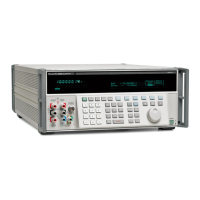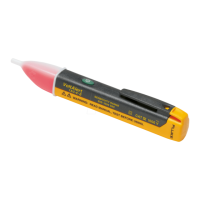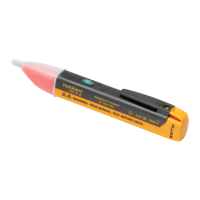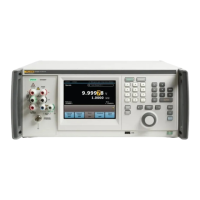Introduction and Specifications
Calibration Check 1
1-11
1-19. Calibration Check
Checking the calibration takes about an hour, and provides you with a means of
documenting the calibrator’s performance of a between calibrations. Calibration checking
is similar to calibration, except internal check standards are used as primary references
(no external standards are needed), and changes cannot be stored. The process produces a
report similar to normal calibration, showing drift relative to internal check standards.
Because cal check does not change stored calibration constants, there is no need to enable
the rear panel CALIBRATION switch. Therefore, an external computer can do the
procedure unattended.
1-20. Developing a Performance History
A Fluke specification is a set of performance limits that all products must meet. To
maintain consistent quality, Fluke calibrators are specified with enough margin to include
temperature, line, and load extremes, plus additional margin for production. This means
that a typical 5700A/5720A Series II calibrator in a typical environment operates inside
50 % of specification limits. For some exacting applications, it can be helpful to know
just how accurately a particular calibrator operates. The proper way to do this is to
accumulate a performance history by calibrating regularly and recording results on a
control chart.
Calibrating regularly and recording the results on a control chart is tedious and requires a
large array of equipment. The calibrator’s calibration check feature is an alternative with
some distinct advantages:
• Calibrated check standards are already programmed into the unit. You do not have to
use external standards.
• The process is consistent and automatic: it does not require an operator’s assistance.
Each calibration check produces a new set of data points for accumulating a historical
record. When this process is externally automated, significant history can be accumulated
much faster than with a manual calibration.
1-21. Range Calibration .
After calibration, you can make further fine adjustments to each range. Range
adjustments are optional; they are not necessary to meet total uncertainty specifications.
However, they do allow you to align your calibrator closer to your standards.
Before you do range calibration, you must first use the calibrator’s semi-automated
calibration procedure. This is to calibrate the ranges that will not be adjusted. It also
performs an initial adjustment for each range, and supplies flatness corrections for ac
functions.
1-22. DC Zeros Calibration
To ensure the validity of the specifications, a dc zeros calibration must be performed at
least every 30 days. If more than 30 days elapse without a dc zeros calibration a warning
message appears. This procedure does not require any external equipment or connections
and takes approximately 2.5 minutes to complete.

